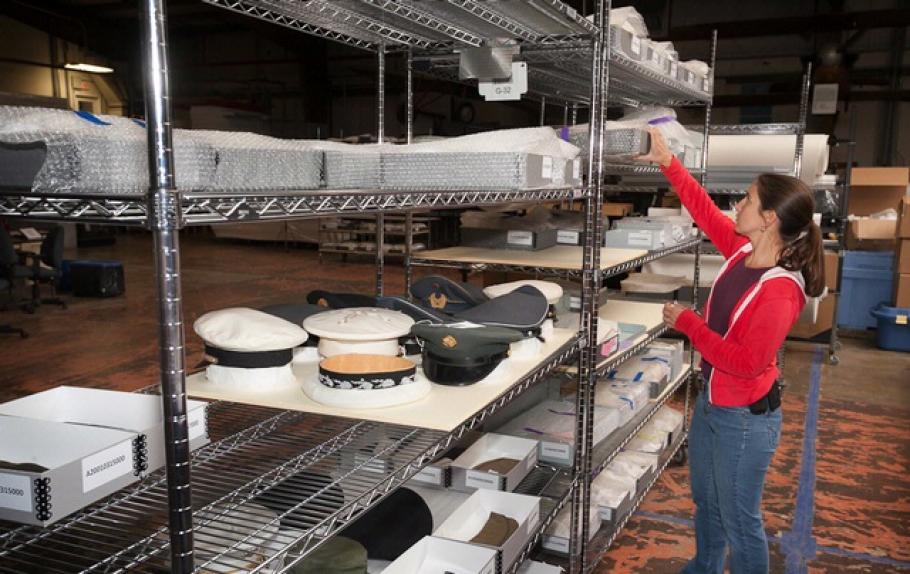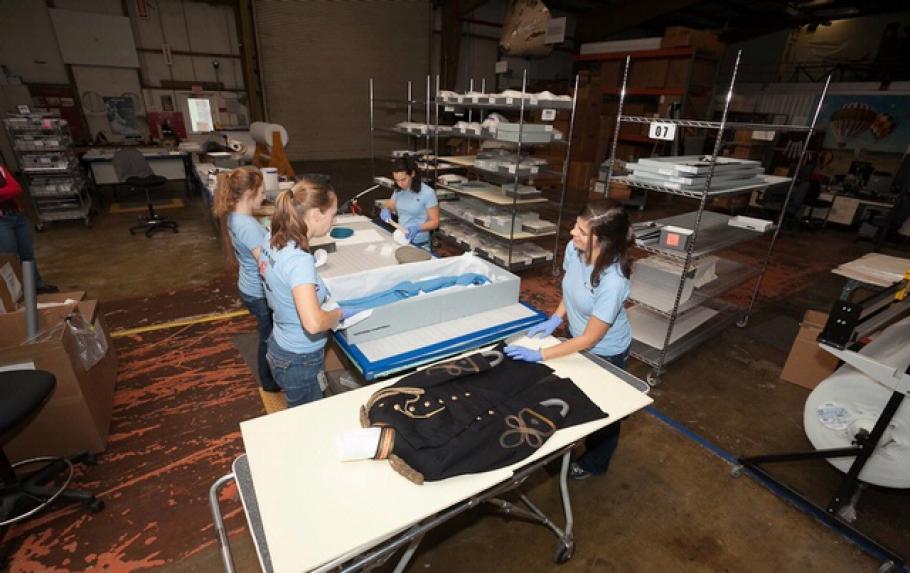My coworkers and I are fortunate: every day, we get to touch pieces of history that few others ever lay hands on and seldom see. Why are we so privileged? We are helping to move some of the National Air and Space Museum’s collections from their previous storage site to new facilities at the Steven F. Udvar-Hazy Center in Chantilly, Virginia.
The move team consists of contractors, interns, and volunteers overseen by project specialist Samantha Snell. In 2011 and 2012, following much planning, coordination and effort by staff, we helped pack up spacesuits; pressure garments for high-altitude flying; and fur and leather-based objects. This winter, we began the process of relocating more than 1,200 wool artifacts in the Museum’s collection. A year’s worth of blog posts could be devoted to the treasures contained in our shipping crates, such as uniform components like socks used during the exploits of Charles A. Lindbergh and Francis Gary Powers; a beret worn by Jacqueline Cochran; a graduation hood that belonged to Hugh Dryden; uniforms worn by Chuck Yeager, Kiffin Rockwell, Alexander de Seversky and William “Billy” Mitchell; and even a plush gremlin!
Representative examples of military uniforms used in World War I and World War II from major participating forces are part of the collection too, as well as civilian uniforms used by commercial airline pilots and flight attendants that reveal changing fashions and subtle (or not so subtle) messages about each airline’s corporate culture. Each artifact has custom internal supports crafted to match its contours. These supports combat the disfiguring effects of gravity over time, which causes fabric to become stressed and prone to tearing at creases, folds, and seams. All the internal supports are made from archival, acid-free materials that help preserve the artifacts for as long as possible; so that future generations can learn from and enjoy them.
The wool objects were being stored in the Museum’s facility in Suitland, Maryland. The buildings that make up this facility were constructed as early as the 1950s and were originally designed to house aircraft temporarily, so their use for small object storage was not ideal. The Udvar-Hazy Center’s new storage facility provides secure, climate-controlled storage designed specifically for small and medium-sized artifacts. Now objects of like material and size can be stored together while not on display or loan. The result of this new storage space is maximized efficiency and benefit to the long-term preservation of these historic artifacts.
As the last deliveries of wool artifacts are being scheduled, we are beginning to pack the remainder of the textiles based on material, including cotton, polyester, and silk. Even when the last small artifact is safely moved, there will be more work to be done. In the new Emil Buehler Conservation Laboratory, treatment is already underway on certain artifacts that have recently arrived. For now, we are enjoying the opportunity to be involved in relocating this unique collection.



